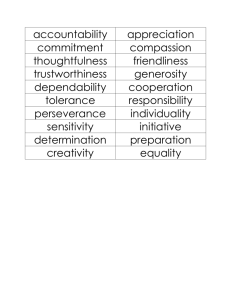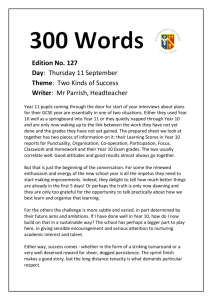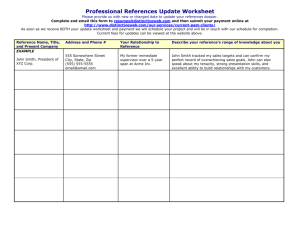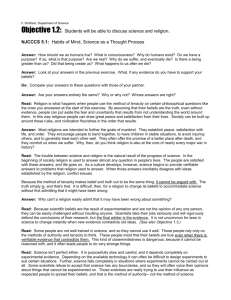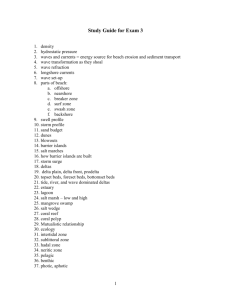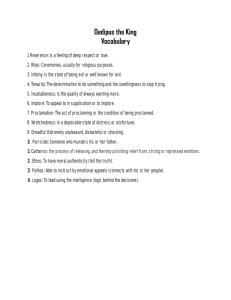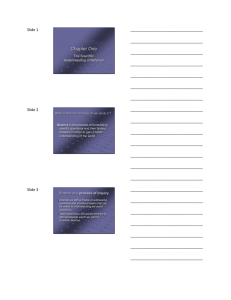boundary layer
advertisement
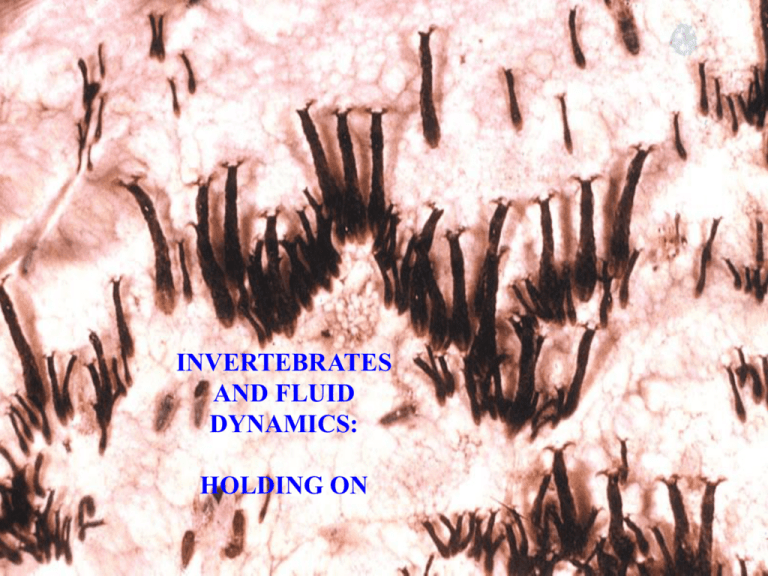
INVERTEBRATES AND FLUID DYNAMICS: HOLDING ON BOUNDARY LAYER Distance from substrate Mainstream Velocity (U) Boundary layer thickness (90%) Boundary layer thickness (99%) Velocity BOUNDARY LAYER Using the boundary layer – water pennies (Psephenidae) BOUNDARY LAYER Distance from substrate Mainstream Velocity (U) Velocity BOUNDARY LAYER Using the boundary layer – water pennies (Psephenidae) Other stream insects Trichoptera Plecoptera Ephemeroptera Stream animals– Strategies for holding on Baetis Rhithrogena Ancylus Stream animals– Strategies for holding on Psephenus Bibliocephala Neothremma Extreme Gradients – Swash Zone Donax Swash Surfing Donax Density Weight distribution Shape Density 2.0 Density (103 kg/m3) 1.0 0 Weight Distribution Pivot point Dorsal Posterior Anterior Ventral Behaviour in a Swash Zone WAVE STRESS a. Limitation of size Water flow 100% 90% Boundary layer WAVE STRESS a. Limitation of size Water flow WAVE STRESS b. Holding on – flow tolerance 3 Flow rate (m/s) 0 Time to dislodge WAVE STRESS c. Holding on - orientation Keyhole limpet WAVE STRESS c. Holding on - orientation Water flow WAVE STRESS c. Holding on - orientation <.5 m/s >.5 m/s Freq -90 0 90 -90 Orientation (º to flow) 0 90 WAVE STRESS d. Holding on - tenacity What is “tenacity”? 1. Testing holding power WAVE STRESS d. Holding on - tenacity What is “tenacity”? 1. Testing holding power 100 Kg required to dislodge 0 Foot area (cm2) 15 WAVE STRESS d. Holding on - tenacity What is “tenacity”? 1. Suction? Atmospheric pressure ≈ 1 kg/cm2 Patella ≈ 3 - 7 kg/cm2 -can’t generate a force > atmospheric pressure - No negative pressure under foot WAVE STRESS d. Holding on - tenacity What is “tenacity”? Patella Mucous layer WAVE STRESS d. Holding on - tenacity What is “tenacity”? area 2. Adhesion 2AS F= d surface tension Thickness of fluid Theoretical adhesion = 600 kg/cm2 3. WAVE STRESS d. Holding on - tenacity What is “tenacity”? 2. Adhesion 1 F µ d Tenacity (kg/cm2 to detach) Weight of mucous 3. WAVE STRESS d. Holding on - tenacity What is “tenacity”? Foot rigidity \ Foot rigidity µ Tenacity 3. WAVE STRESS d. Holding on - tenacity What is “tenacity”? Foot rigidity l d Flexibility µ l:d ratio 3. WAVE STRESS d. Holding on - tenacity What is “tenacity”? Foot rigidity High In field Tenacity Tenacity µ severity of wave action Low Low High Flexibility 3. WAVE STRESS d. Holding on - tenacity What is “tenacity”? Drag Resistance to water movement depends on: FLOW 1) Size 2) Shape 3) Texture 3. WAVE STRESS d. Holding on - tenacity What is “tenacity”? Drag Drag – not well correlated with density Drag Side Front Rear Types of Limpets Non-Migratory Migratory -don’t move far -move up shore -often fixed and territorial -high r -low r -high growth -low growth (need high food intake) -react to predators by clamping -flee from predators LESS FLEXIBLE MORE FLEXIBLE A COMPROMISE OF SEVERAL FACTORS Sea Urchins - Echinoidea lunules WHAT IS THE FUNCTION OF LUNULES? 1) Aid in burrowing 2) Removal of feces 3) Maintain a “communication” with the surface if buried 4) Maintain inclined posture 5) Feeding If lunules have a hydrodynamic function -they should grow with the animal observed isometric Log lunule length p < .05 Log test diameter Burrowing speed 230 sec 231 sec Time to burrow Plugged Not plugged Flow through a sand dollar Weight Lift Weight Burrowing to add weight Lift Weight Sand Dollar reorientation - Dendraster Adding weight – incorporate magnetite Reducing lift and drag Skin drag – important? Pressure drag – depends on shape Reducing lift and drag Skin drag – important? Pressure drag – depends on shape Very flat Reducing lift and drag Skin drag – important? Pressure drag – depends on shape Rounded Area of lower pressure How do you reduce lift Reduce pressure differential between upper and lower surfaces Can sand dollars tell the direction of orientation? Posterior Anterior Can sand dollars tell the direction of orientation? -inverted sand dollars – can flip over more easily with posterior edge facing upstream (i.e critical velocity to re-orient is lower) Initial orientation Final orientation (1 hr) Hardy & Merz. 2013. Invert. Bio 132:52
